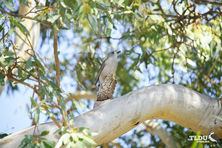
Shoppers Feedback:
Jan 17, 2017
Hello Ros,
I have now paid the invoice, but I would like to write to you just to say a big THANK YOU for getting me the Penguin!
The ChatterMate Penguin became a nice memory for me when I was in New Zealand, and I am so greatful to you for arranging so that I could have it! :-)
Thank you so much!!!!!!!!!!!
Regards,
Malin
Hi Ros,
Many thanks for your very kind email. I really appreciate your prompt reply!
I appreciate your advice regarding the decorations and customs. These are a gift for my daughter’s exchange student family so when she returns home on the weekend I will show her and see if she loves them as much as I do!
Thanks so very much again - I am truly grateful for your kind assistance.
Kind Regards
Bernadette
Ros,
Thanks again for the great customer service. It's a refreshing change!
Best regards,
Trevor
Hey Roz,
Thank you for your emails. Just loved my first order. The cute little Aussie bush critters are going to be used for an office Christmas decoration. My colleagues also liked them and talked about making an order to your site. I'll send you a photo when completed.
I'll be ordering more to send to my daughter's host family in America.
Fabulous service from you.
Kind regards,
Michelle
Thankyou. Order arrived today. One very happy grandson with his new beastly binoculars.
Regards,
Irene
- Home
- Wild Wonders
- Shop
- Aromas of Australia
- Australian Made
- Books
- Book Marks
- Christmas Decoration Sale
- Christmas Decorations
- Clocks
- Drink Holders
- Garden & Outdoor
- Gift Wrapping & Cards
- Home & Giftware
- Jewellery
- Keyrings
- New Products
- Pencils & Pen Holders
- Photo Frames
- Plush Toys
- Plush with Sound
- Sheepskin Rugs
- Stationery
- Stone Carvings
- Toys & Games
- Travel Goods
- Wedding
- Wild Figurines
- Wildlife Safety Products
- Wind Chimes
- Wine Charms
- View All Products
- Wildlife
- Australiana
- Explore
- Contact Us
Grey-shrike Thrush

Quick Facts
| Length: | 22 cm |
| Height: | - |
| Weight: | 63 grams |
| Colour: | - |
| Habitat: | Forests and woodlands |
| Food: | Insects, spiders, small mammals, frogs, lizards, birds eggs and their young and occasionally carrion |
| Predators: | - |
| Status: | Secure in all states and territories |
The Grey Shrike-thrush is a rather drab coloured bird, although the plumage varies throughout its extensive range. Birds are mostly grey in the east, with an olive-grey back, and pale grey-white cheeks and underparts. In the north, the plumage is predominantly brown, and western birds are grey with buff underparts. Adult males are browner on the mantle than the female and young birds have varying amounts of rufous on the cheeks and wings.
Grey Shrike-thrushes are found in all but the most arid regions of Australia and Tasmania, as well as on the larger offshore islands and in southern New Guinea.
The Grey Shrike-thrush is found in forests and woodlands. It is a common and familiar bird, although some decrease in numbers has been noted around human habitation, particularly in the west of its range.
The Grey Shrike-thrush searches for food on the ground, generally around fallen logs, and on the limbs and trunks of trees. It has a varied diet consisting of insects, spiders, small mammals, frogs and lizards, and birds' eggs and young, and some birds have been observed feeding on carrion. Fruits and seeds may also be eaten on occasion.
Grey Shrike-thrush pairs generally remain together for life and inhabit the same areas throughout this time. Breeding territories of up to ten hectares are maintained. The nest is a cup-shaped structure of dried vegetation, and may be constructed in the same site year after year. Both birds share the nest-building and incubation duties, and both care for the young birds.
Some decrease in Grey Shrike-thrush numbers has been noted around human habitation, particularly in the west of its range.
Last Updated: Friday 6th September, 2013
BirdLife Australia - www.birdlife.org.au
BUSH e-TELEGRAPH
Signup for our monthly newsletter the "e-Telegraph"
Quick Links
Home | The Beginning | About The Land Down Under | Wild Wonders | Advertise on Wild Wonders | Christmas Decoration Sale | Christmas Tree Decorations | Drink Holders | Plush with Sound | Stone Carvings | Wildlife Wine Charms | Freebies | Australian Wildlife | Help Our Wildlife | Australiana | Photo of the Month | Explore The Land Down Under | Contact Us | Legal Notices

